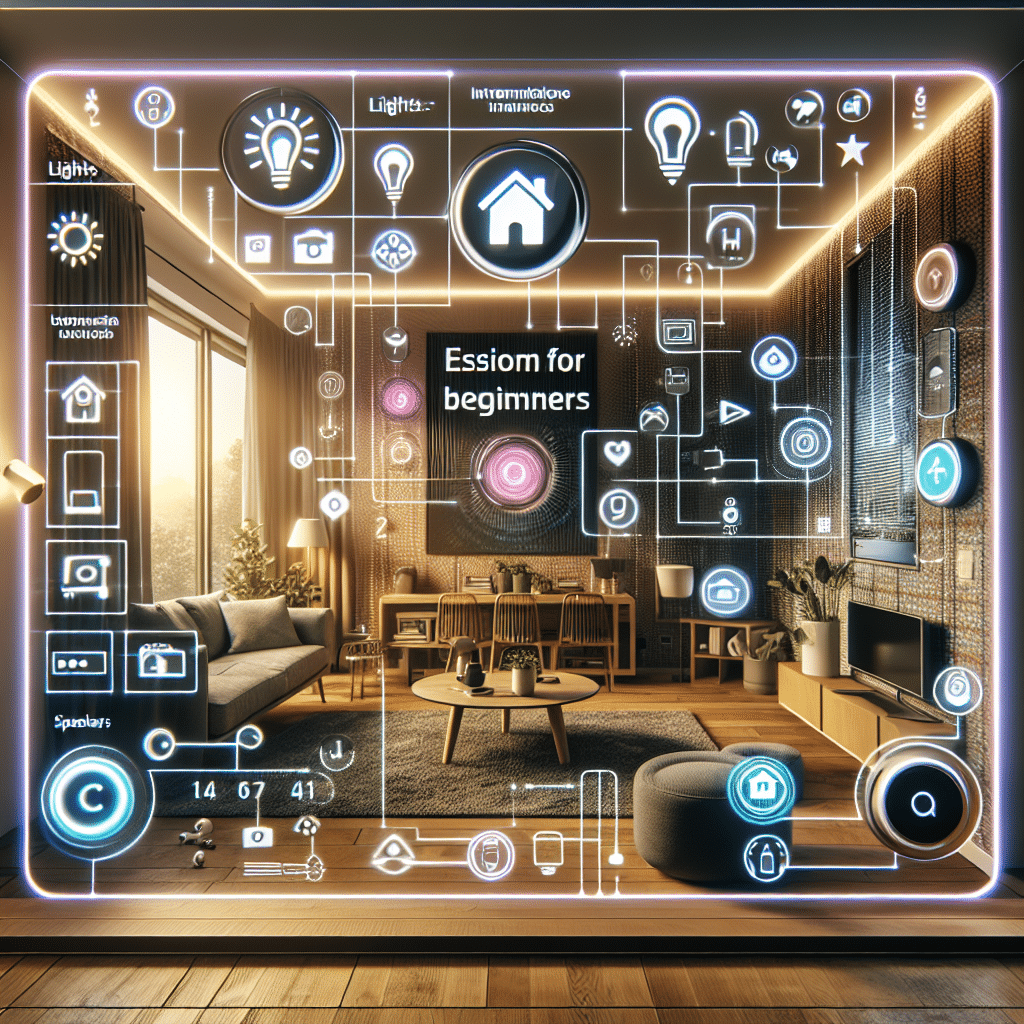What is a Smart Home Hub?
A smart home hub serves as the central command center that allows various smart devices to communicate with each other seamlessly. These devices can include smart lights, thermostats, cameras, locks, and appliances. Smart home hubs can consolidate different functionalities, making it convenient to manage numerous devices from one app or interface.
Key Features to Look For
When selecting a smart home hub, consider these essential features:
-
Compatibility
Ensure the hub supports a wide range of protocols (Zigbee, Z-Wave, Wi-Fi, Bluetooth) and devices. Popular hubs like Samsung SmartThings and Amazon Echo Plus have extensive compatibility with devices from different manufacturers. -
User Interface
Choose a hub with an intuitive user interface. Apps should be easy to navigate, and the setup process should be straightforward for beginners. -
Voice Control
Look for hubs that integrate seamlessly with voice assistants like Amazon Alexa, Google Assistant, or Apple HomeKit. Voice control adds an element of convenience. -
Automation Capabilities
Automation features allow you to create routines according to your lifestyle. Effective hubs enable you to set triggers based on time, device status, or location. -
Security Features
Since hubs connect various devices, prioritize security. Look for features like encrypted connections, regular software updates, and two-factor authentication.
Popular Smart Home Hubs in 2025
-
Samsung SmartThings
SmartThings remains a leader in the smart home arena in 2025. It supports an array of third-party devices and protocols, making integration easy. Its SmartThings app provides customization options and automation setups. -
Amazon Echo Plus
The Echo Plus stands out due to its built-in smart hub capability. With Amazon Alexa at its core, it offers excellent voice control and supports a multitude of smart devices. -
Google Nest Hub
For Google users, the Nest Hub acts as an efficient digital assistant, allowing control over smart home devices through voice commands. It’s particularly beneficial for those already integrated into the Google ecosystem. -
Apple HomePod Mini
For Apple fans, the HomePod Mini offers robust HomeKit integration. It’s an excellent choice for users prioritizing privacy, as Apple focuses heavily on data protection. -
Hubitat Elevation
If you are looking for more advanced options, Hubitat Elevation provides local processing, which offers speed and enhances security since control doesn’t rely on cloud services.
Setting Up Your Smart Home Hub
-
Selecting the Right Devices
Before diving into setup, identify the smart devices you wish to include. Consider essential devices like smart bulbs, plugs, and security cameras to start. -
Installation
Follow the manufacturer’s instructions to install your hub. Most hubs require Wi-Fi connection, and some may need an Ethernet connection for initial setup. -
Configuring the App
Download the companion app on your smartphone or tablet. Sign up or log in, then follow on-screen prompts to add your hub. -
Connecting Devices
For device connection, ensure they’re compatible with the hub. Utilize the app to add devices, typically achieved by scanning a QR code or using a manual pairing process. -
Creating Automations
The real magic of a smart home comes from automations. Use the hub’s app to create routines, ensuring everything is streamlined into one coherent system.
Further Customization
Gone are the days when smart home devices were limited to single tasks. In 2025, augmented capabilities allow intricate configurations such as:
-
Geo-fencing
Set actions based on your location. For example, program lights to turn on when you arrive home. -
Smart Scenes
Develop scenes where multiple devices act automatically. A “Good Morning” scene could adjust your thermostat, open blinds, and switch on the coffee maker at sunrise. -
Energy Management
Utilize energy monitoring features to keep track of your energy consumption and adjust settings for optimal usage.
Troubleshooting Common Issues
-
Connection Problems
Ensure devices are within range of the hub. Additionally, check that your internet connection is stable. -
Device Compatibility
If a device isn’t connecting, verify that it supports the hub’s technology (Zigbee, Z-Wave, etc.). -
Routine Failures
For automations that fail, inspect the app for any misconfigurations. Sometimes restarting the hub or the device can resolve these issues.
The Importance of Regular Updates
Smart home hubs frequently provide firmware updates. Keeping your hub updated is crucial not only for performance improvements but also for security enhancements. Enable automatic updates to stay informed.
User Communities and Resources
Joining online forums, such as Reddit or manufacturer communities, can be invaluable for beginners. These platforms provide tips, troubleshooting advice, and product reviews that can enhance your smart home experience. Here are some resources:
-
SmartThings Community
Great for Samsung SmartThings users looking for specific advice and shared automations. -
r/HomeAutomation
A Reddit community where you can ask questions, share experiences, and discover innovative ideas.
Expanding Your Smart Home Ecosystem
Once your initial setup is complete and running smoothly, consider expanding your ecosystem:
-
Smart Security Systems
Integrate doorbell cameras, security cameras, or even smart locks to enhance home security. -
Smart Appliances
Explore smart refrigerators, ovens, and washing machines that can be controlled via your hub for added efficiency. -
Smart Thermostats
Devices like Nest or Ecobee learn your heating and cooling preferences, making them energy-efficient. -
Smart Speakers and Displays
Enhance your smart home experience with speakers and displays that can serve dual purposes, controlling devices while offering entertainment and information.
Conclusion
Navigating the world of smart home hubs in 2025 can be overwhelming for beginners. By considering compatibility, features, and user interfaces, selecting the right hub becomes easier. Remember to leverage online communities for support and expand thoughtfully to ensure a seamless, personalized smart home experience.
